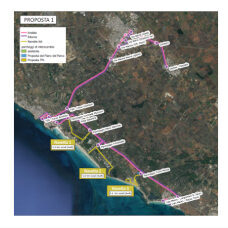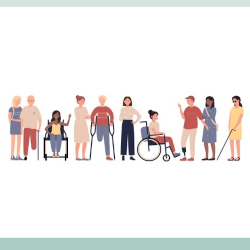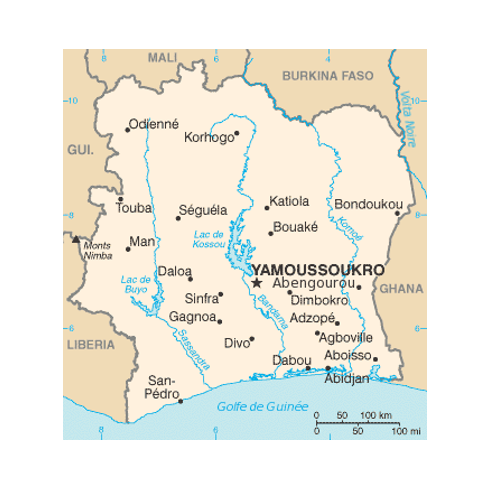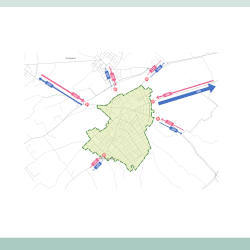- All
- African projects
- assessment
- assessment selected projects
- Assessment selected projects 2
- Assessment selected projects 3
- Assessment selected projects 4
- ASTRA
- Cost Benefit Analysis
- Electric mobility and ITS
- MOMOS
- planning
- planning selected projects
- planning selected projects 2
- planning selected projects 3
- planning selected projects 4
- planning selected projects 5
- projects
- Railways projects
- research
- research selected projects
- research selected projects 2
- research selected projects 3
- studies
- studies selected projects 1
- studies selected projects 2
- studies selected projects 3
- studies selected projects 4
- studies selected projects 5
- TRTingegneria
- TRUST
- urban mobility
- Data analysis for the project of electric vehicles in Latvia Objectives of the study The study had several objectives. First, assessing and analysing the situation regarding electric mobility in Latvia, considering the trend of the share of electric cars in the fleet and the infrastructural endowment of charging facilities, also assessing their geographical distribution. Then, verifying the state-of-the-art and the potential of hydrogen cars as well as the conditions that could facilitate their penetration into the fleet. Then, developing scenarios for the growth of electric mobility and, based on those, quantifying the need for electric infrastructures and the resulting environmental benefits. Some results of the study The study showed that the registration of electric vehicles (mainly passenger cars) has grown at a high rate in recent years, but the share of these vehicles in the fleet remains limited. The provision of public charging infrastructure appears consistent with needs in all Latvian regions. The role of public administrations as pioneers for the deployment of electric vehicles is relevant. Regarding hydrogen cars, the analysis showed that they currently represent a negligible share of the fleet, with significant numbers in only a few countries. Given also the attitude of manufacturers, it seems preferable at the moment for public intervention to focus on the electric mode. Future scenarios of electric vehicle penetration were defined as projections based on European-scale studies, considering at what extent the observed trend so far has been more or less consistent to the predictions of these studies. In general, the scenarios suggest that in the short to medium term it will be mainly electric cars that will enter the fleet, while in the long term the highest shares of electric penetration will be achieved for commercial vehicles. From an emissions point of view, electrification of the fleet will provide a contribution, but the improvement of the efficiency of conventional vehicles can be even more relevant.
- Professional support on the cost-benefit analysis of the «S.S.51 – Variante di Cortina» project A new bypass in the city of Cortina d’Ampezzo (Belluno) is foreseen as part of the infrastructural improvements promoted by Anas S.p.A. in the Veneto region, Italy, and particularly in the areas hosting the XXV Winter Olympic Games in 2026. The project consists of a road bypass alternative to the current route formed by state roads no. 51 «di Alemagna» and no. 48 «delle Dolomiti», which currently pass through the city centre. It aims at lightening the traffic flow crossing the city by moving it towards a different journey – mostly in a tunnel -, thus improving traffic smoothness and the liveability and attractiveness of the popular mountain resort, which enjoys a rich and vibrant tourist market in both winter and summer. TRT developed the cost-benefit analysis of the proposed project according to the most recent guidelines of the Italian Ministry of Infrastructure and Transport. Transport and socio-economic benefits – such as time savings of passengers and goods, as well as a reduction in accident costs – were identified and quantified in monetary terms, and confronted with construction and periodic maintenance costs. Based on results obtained from the economic model, properly discounted over time, the usual indicators for socio-economic returns were computed, i.e., the Economic Net Present Value (NPV), the Internal Rate of Return (IRR), and the benefits-costs ratio (B/C). A sensitivity analysis related to the most critical variables was run, along with the computation of the IRR’s switch values (i.e., the values of individual variables that alone turn the NPV to the negative side). Finally, aiming at valuing the safeguarding of a landscape and touristic asset such as the Italian Dolomites, the analysis was accompanied by a qualitative assessment of the project’s non directly monetizable benefits. These include a higher usability and accessibility of the city centre as a consequence of lower congestion, higher transit speed for extra-urban traffic in case of adverse weather conditions, as well as an increase in road safety thanks to a route running mostly in a double-barrel tunnel.
- Design and technical assistance for the implementation and tendering of a seasonal public transport service in the Municipality of Ugento (Lecce, Italy) TRTIngegneria was commissioned by the municipality of Ugento to support the definition of a public transport service to be provided during the summer months to connect all the coastal localities in its territory (Torre San Giovanni, Fontanelle, Torre Mozza and Torre Vado), as well as between the more inland areas (the urban centre and the Gemini hamlet) and the coast. The activities concern in particular the establishment of a new municipal bus line and some shuttle services, the revision of the extra-urban public transport services already offered in the area, as well as the preparation of tender documents for the assignment of the new seasonal transport service. The design of the new bus line includes the identification and verification of stopping points, the definition of routes and the operating schedule. The new service is proposed as an integration with the current offer of extra-urban services connecting Ugento with the municipalities of: Casarano, Gallipoli and Santa Maria di Leuca as well as with the planned TAD flexible transport system of the Area Interna Sud Salento. The service will be tested during the 2023 tourist season in order to calibrate the final tender scheme and prepare the subsequent multi-year tender. TRTIngegneria also provided indications with respect to the overall mobility system of the coastal area, verifying the offer of parking in dedicated parking areas, parking on the road and the forecast of a shuttle system from the parking areas and stops to the access to the sea and bathing facilities
- Technical-economic feasibility project for the bicycle path along via Emilia Ovest in the section between viale Virgilio and the village of Marzaglia TRTIngegneria was selected after a call for tenders to draw up a technical-economic feasibility project for a bicycle infrastructure parallel to the SS9 via Emilia Ovest in the Modena area. The project infrastructure, envisaged by PUMS2030, connects the roundabout between the SS9 and viale Virgilio with the village of Marzaglia, on the border with the municipality of Rubiera. In the road junction of viale Virgilio there are some existing and planned cycle paths that allow to reach the centre of Modena and the productive areas located on the north side of via Emilia Ovest. The cycle path passes through different contexts, both urban, peri-urban and country, integrating into already partly urbanised, acting as a reconnecting element for slow and sustainable mobility in the western sector of Modena. Along its route it encounters several elements that constrain its path, in particular a section already built (at the railway underground passage under the standard Bologna-Milan line), a heritage-listed building, the consolidated urban grid of Cittanova town as well as the presence of shops and important mobility infrastructures, such as a split-level intersection for access to the Grandemilia shopping centre. The project follows the indications for the technical-economic feasibility project indicated in Article 23 of Legislative Decree 50/2016. The body of the project consists of the general documentation with the technical report, the preliminary maintenance plan, the plan for the use of excavated earth, the economic framework, the summary calculation of expenditure, the measures aimed at protecting health and safety in the workplace, and the pre-feasibility studies for the environment, landscape and prior verification of archaeological interest. Then there is a non-technical summary and the general report that contains the regulatory and planning references, the description of the state of affairs, the description and evaluation of the different alternatives with their relative interferences, the availability of areas, compliance with the DNSH principle, the timetable and the economic and financial aspects. Another part of the project body are the graphic drawings. These include the general framework chorography, the planimetry of the actual and project state (the latter covering all the project alternatives on topographical relief, on photomosaic and on the excerpts of the territorial planning instruments), the longitudinal profile, the road signs, the detailed plan of the interferences with the plants and underground services, the description of the special manufactured articles and structures, the standard sections, the current cross sections, the general indication of the work-site areas and the photo-insertions.
- MIMOSA: Feasibility study on the accessibility optimization of passengers with reduced mobility (PRM) in the ports of Ancona and Pesaro The MIMOSA project (MarItime and Multimodal Sustainable pAssenger transport solutions and services) aims to improve the quality, safety, and environmental sustainability of marine and coastal transport services and nodes by promoting multimodality in the Programme area. Within this project, TRT Trasporti e Territorio has been appointed by the Central Adriatic Ports Authority to conduct an analysis of accessibility optimization for people with reduced mobility (PRMs) in the ports of Ancona and Pesaro. The purpose of the study is to analyze the current state of accessible infrastructure and services and to identify possible improvements to the available services for passengers with physical, sensory (hearing and visual impairments), and mental-learning disabilities in the ports of Ancona and Pesaro, in accordance with the legislative framework.. In order to carry out the study, several activities have been undertaken, including fieldwork and mapping activities which allowed to map and verify the current status of accessible mobility infrastructures and services for passengers with disabilities in the ports of Ancona and Pesaro. Furthermore, a participatory process was conducted based on individual interviews and final plenary meetings with local stakeholders, such as institutional bodies, maritime and local public transport operators, and associations of PRMs. The preliminary results that emerged from the fieldwork and the participatory process activities allowed to perform a SWOT analysis, identifying strengths, weaknesses, opportunities and threats. Then, the study has collected a series of national and international best practices to further identify possible improvements to the infrastructures and services currently offered to PRMs in the ports. Finally, a web accessibility analysis was conducted and a dedicated webpage on accessible transport infrastructures and services currently available in the ports of Ancona and Pesaro was developed. The first results emerging from the study are: the provision of a dedicated transport service for PRMs connecting the port of Ancona to the station and the airport; and the integration of the study in the Plan for the Removal of Architectural Barriers (PEBA) of the Municipality of Pesaro.
- Ivory Coast – Elaboration of the National Logistics Plan The aim of the project is the elaboration of the National Logistics Plan of the Ivory Coast with the identification of strategies for the development of logistics in the country, the drafting of an action plan and the training on the simulation model realised. The work is characterised by the performance of the following activities: collection of data and information through field interviews and desk research with reference to freight transport and logistics in Ivory Coast; processing of the data and information collected in order to provide an overview of the current state of logistics in the country, both in terms of supply and demand for freight transport; analysis of the institutional, organisational and regulatory framework of the freight transport sector in the Ivory Coast; study of the country’s freight transport and logistics development programmes for the future years; elaboration of the National Logistics Plan of the Ivory Coast. In support of the plan, TRT is also responsible for the construction of a simulation model of the demand and supply of freight transport in the country, capable of providing a forecast of demand, also in relation to the constant growth of the national GDP and the planned infrastructural interventions both on the transport network and on the main nodes (such as, for example, distribution centres and port terminals).
- General Urban Traffic Plan of Monteroni di Lecce The VI Municipal Police Sector of the City of Monteroni di Lecce has assigned TRT Trasporti e Territorio S.r.l. the task of drafting the General Urban Traffic Plan, a task formalised through executive determination no. 1083/RG of 31/12/2021. The development of the traffic plan of Monteroni will follow the indications contained in the Italian ministerial directives of 1995 and the most recent updates of “Nuovo Codice della Strada” (the Italian traffic code), which provide for the implementation of useful tools to improve the safety of alternative modes of transport and of weaker users. This is a short-term implementation tool aimed at achieving improvements in traffic conditions and road safety, with the reduction of noise and air pollution and the containment of energy consumption while respecting environmental values. The traffic plan is divided into two parts. The first includes the cognitive framework with the aim of describing the current state of the city’s traffic system. Our analysis includes: regulatory sources; the framework of supra-local and local planning and programming; the description of the territorial structure and localisation of mobility attractor poles; the description of transport networks supply and services, including the road network, parking, public transport and the bicycle network; traffic demand; environmental and social impacts related to the mobility system. On the basis of the indications coming from the cognitive framework, the second phase will lead to the identification of objectives and criteria for the Plan’s interventions. The various aspects of the Plan will be developed, with special focus on topics such as road classification (including E bis and F bis roads; cycle routes), school zones and the perimeter of the Zone of Special Urban Importance, as well as the main critical junctions.
- Due diligence of the documentation supporting the road project for the new Galeazzi hospital, Milan TRT was commissioned to carry out a verification of the demand data used for the Arexpo-MIND project in Milan (redevelopment of the area that hosted the Expo Milano 2015 event) for the area of the new Galeazzi-Sant’Ambrogio hospital, the parking demand and supply, and the viability of the new hospital. The study, focused on the analysis of the documentation made available by the client (taken from the environmental impact studies of the PII Post Expo, which is part of the Arexpo-MIND area’s project, from the annexed Mobility Report of the urban planning project as well as from other internal documents). Data from the official documents were compared with alternative sources, including data collected by TRT in previous studies involving hospital facilities and the ITE 10th edition Trip Generation manual. The official documents were analysed to reconstruct the expected mobility demand and the resulting parking demand. This information was then compared with data from other hospital facilities (one hospital located in an urban area and a second one in a suburban area), with an estimate of the trips conducted by TRT on the basis of data from the Galeazzi hospital shared by the client, and with the estimate of the generating coefficients deduced from the Trip Generation manual. The comparison was carried out using specific indicators that made it possible to compare different hospitals, using the number of total and peak hour trips, peak hour factor, trips per hospital bed, and the ratio of trips with total population involved. A similar approach was followed for the analysis of parking demand and consequent supply, analysing available documentation, identifying the overall supply of dedicated and public parking, in order to compare it with other realities known to TRT through previous studies. Lastly, the access road layout of the new hospital was analysed, verifying the adequacy of the dimensions, the provisional shape of the accesses at the Cargo 8 and Cargo 10 gates (the name remaining from the management of the Expo 2015 area) and the definitive one, taking into account the interference of ordinary traffic with the emergency traffic directed to the emergency room, also proposing a different configuration in the use of the accesses.
- Sustainable Urban Mobility Plan (SUMP) of Syracuse, Italy, and di Siracusa and related sector insights Following a tender procedure, the Municipality of Syracuse commissioned to Sintagma and TRT Ingegneria to update the Sustainable Urban Mobility Plan (SUMP), which the city adopted in 2019. SUMP development is divided into two phases. In the first one, the cognitive framework was reconstructed, updating the mobility system with regard to its current state. In particular, the planning-programmatic framework at regional, provincial and local level, the territorial and socio-economic framework of the plan area, the supply of transport networks and services, the demand for mobility and the social (accident rate) and environmental (atmospheric pollutants, fossil fuel consumption, etc.) impacts determined by the mobility system were defined. The second phase, which is currently being drafted, consists of the drafting of the Plan proposal, which will take into account the results of the SWOT analysis (in particular, the identification of critical issues and opportunities), the identification of the objectives and strategies of the PUMS, shared with the structures of the public administration. Parallel to the first phase and during the second phase, the participation process has been developed with the involvement of citizens and users of the city in the definition of the proposed Plan.. Participation activities have been organised through an extensive communication campaign, involving the direct involvement of Syracuse citizens, who are called upon to give their input by filling in an online questionnaire, thanks to which it is possible to investigate the mobility habits of the population and report any proposals. To complete the process, meetings dedicated to stakeholders and citizens have been organised to present the Plan document. Subsequently, accompanying the PUMS document, the new General Urban Traffic Plan will also be drafted, together with specific sectoral insights on particularly important topics such as, for example, mobility of all for all, home-school mobility, electric mobility.. For further content visit siracusapums.it (in italian) which contains the documents produced and presents the modalities of participation.









